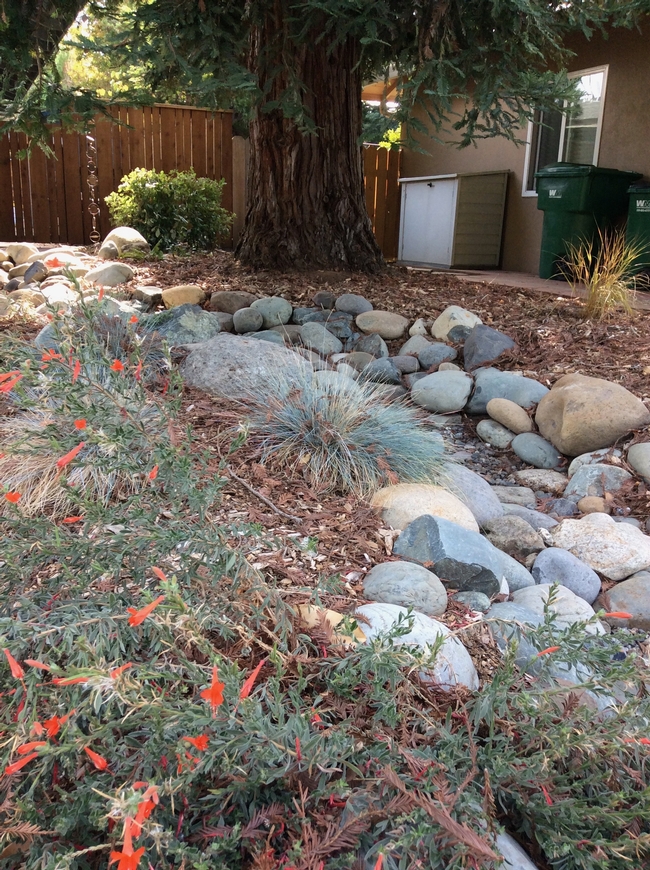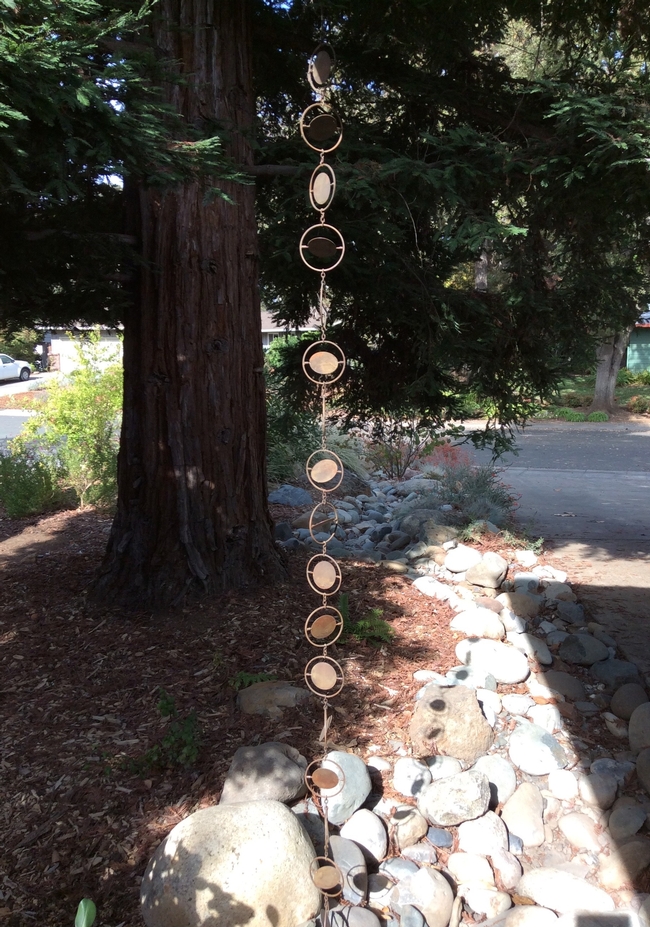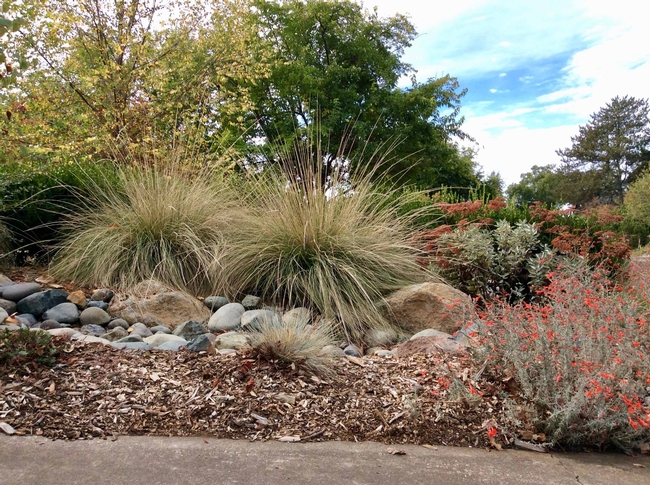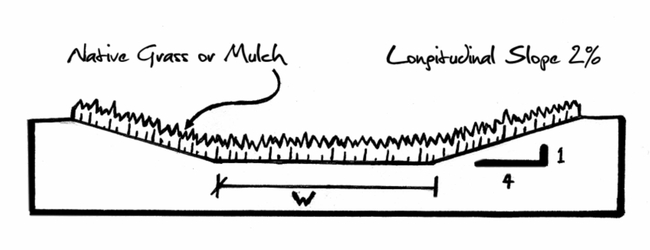- Author: Alicia Springer, UC Master Gardener of Butte County
By Alicia Springer, UC Master Gardener of Butte County, November 2, 2018

Chicoans have a macro-example of this approach to storm water in our own Lindo Channel, which catches the overflow when Big Chico Creek runs high. While many towns direct excess storm water to concrete flood control culverts which whisk the water to treatment plants, Lindo Channel's runoff nourishes a riparian corridor of oaks, sycamores, willows, cottonwoods, and bay trees (along with nonnative brush). The stream flow recharges upper-level groundwater, and the greenery helps clear air pollution and offers sanctuary to birds and other animals large and small.

A swale is a shallow channel, bermed a bit on both sides, that lets gravity do the work of moving rainwater along a gently sloping course. The swale directs water away from structures and through a straight or meandering depression lined with river rock, grasses, or other vegetation that can tolerate periods of winter wet and summer dry (regional native plants generally fit the bill). A grassy, vegetative swale might be lined with cool-season native meadow grasses such as sedges (Carex species) or rushes (Juncus species) that thrive with winter moisture and go dormant over the dry summer. A rock-lined swale resembling a dry creek bed holds visual interest throughout the seasons. Water-loving plants can be sited closer to the flow, while more water-averse selections can keep their feet dry further up the banks.

In general, your rainwater collection surface should slope downward from the water source, or you can create a minimum 2% slope. Steep slopes can create erosion, so avoid orienting your swale down slope in such areas.
Locate your swale:
- At least five feet away from structures without a basement, or ten feet from structures with a basement.
- Away from septic systems and leach fields
- Away from a tree's crown or major root zone to avoid root rot
- In full or partial sunlight to support plantings

Anchor your artificial creek bed with larger stones, boulders, and deep-rooted plants such as deer grass (Muhenbergia rigens) and fescues (Festuca species). If space permits, larger shrubs can create a more dramatically varied look. Vegetation should be planted and at least partly established before the winter storms, so be prepared to irrigate in dry periods and through at least the first summer. Once well established, deep-rooted native plants will enjoy the cool season storm water and survive the summer heat.

From a simple gravel channel to a dry creek to a more elaborate retention pond, the hardscape elements of a rain garden project may seem daunting without step-by-step instruction. “Coastal California Rain Gardens” published by University of California Agriculture and Natural Resources (UCANR), offers detailed information about planning, building, and maintaining a rain garden. Another useful guide is “Slow it, Spread it, Sink it! Rain Gardens and Swales” published by the Napa County Resource Conservation District. Both publications offer additional plant suggestions and resource listings.
Additional information and plant names used in photos:
A dry creek rain swale in a suburban garden landscape. The swale, roughly 50 feet long x 10 feet wide, runs along a sloping driveway. Redbud (Cercis occidentalis), deergrass (Muhlenbergia rigens), St. Catherine's Lace (a buckwheat, Eriogonum giganteum), Santa Barbara daisy (Erigeron karvinskianus) and California fuchsia (Epilobium canum) are among the native species seen.
Plants that tolerate winter moisture and summer drought line the banks of the swale. Idaho fescue (Festuca idahoensis) and California fuchsia (Epilobium canum) are seen. A redwood (Sequoia sempervirens) is on a raised bank so rainwater can irrigate but not saturate the root area. The redwood will require summer watering to stay healthy in the Butte County climate unless it's near a perennial stream.
A decorative rain chain at the ‘headwaters' of the creek bed directs flow from the roof gutter. Note that the creek bed is directed away from the base of the redwood, which is on a higher bank.
Boulders and deergrass (Muhlenbergia rigens) stabilize the slope and provide pleasing visual variety. Larger native plant selections screen the property. These include toyon (Heteromeles arbutifolia), mountain mahogany (Cercocarpus betuloides), deer grass, and redbud (Cercis occidentalis).
Diagram of a grass-lined vegetative swale courtesy of Napa County Resource Conservation District.


